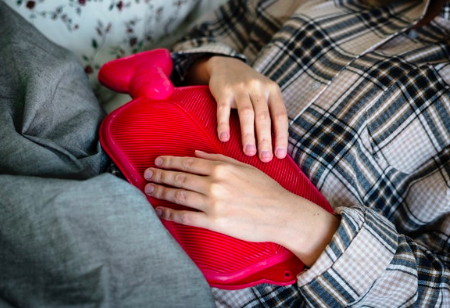The Basics
Periods are confusing. Here are some basic facts to help you understand what a period is, how to manage it, and the different period products available.
WHAT IS A PERIOD?
Every month, hormones in a menstruating person’s body cause an egg to mature in the ovaries and be released into the fallopian tube. At this point the egg waits to be fertilized by sperm. If the egg is fertilized it travels to the uterus, where it implants and can grow into a baby. So, what does this have to do with menstruation? Well in order to prepare for this egg, the uterus has to build up a very thick and rich environment to house the growing embryo. If the egg doesn’t get fertilized, then the uterus doesn’t need the layer to support the egg, so it sheds the extra layer causing menstruation. After menstruation, the uterus starts building up again for the release of the next egg, and the process repeats. That is why it is often called the menstrual cycle!
The menstrual cycle occurs due to fluctuations of certain hormones in the body. The main hormones involved are Estrogen (a.k.a. Estradiol), Progesterone, Follicle Stimulating Hormone (FSH) and Luteinizing Hormone (LH). In order to understand the cycle, it is helpful to think of it in days. Day 1 is the first day of bleeding during menstruation. On day 1, Estrogen and Progesterone levels are both low, which cause FSH levels to increase. FSH causes a follicle in an ovary to start developing. A follicle is a sac that contains an egg. The developing follicle begins to produce Estrogen. At around day 12-14, the Estrogen level peaks, and triggers the production of LH. This sharp spike in LH causes the follicle to burst and release the egg. The ruptured follicle (now called the corpus luteum) continues to produce both Estrogen and Progesterone. However around day 28, once the egg isn’t fertilized, the production of Estrogen and Progesterone drop again, which causes menstruation and the cycle starts over. The cycle itself can be broken into three phases. The first phases (when the follicle is developing) is called the follicular phase. The second phase is the ovulatory phase, occurs when the egg is released. The third phase is the Luteal phase. This hormone cycle is very complicated and can be difficult to understand at first. The graph above shows the levels of hormones in relation to what the uterine lining is doing throughout the cycle.
These fluctuating hormone levels contribute to Premenstrual Syndrome or PMS. PMS is completely normal, and is just a side-effect of the menstrual cycle. Common symptoms of PMS include: food cravings, mood fluctuations, breast tenderness, acne flare-ups, fatigue, and diarrhea or constipation.







